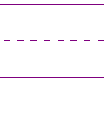I'm currently composing a letter to a good friend of mine—using actual pen and paper—and I just realised, that I have absolutely no idea how to properly handle apostrophes in cursive script.
English, is in fact, a second language to me. My native tongue does not use apostrophes, at least not in a way I'm aware of. So I've never had to learn them properly.
There are two ways, as I see it, to handle this:
- 1) To simply write the word as a single word and stick an apostrophe in there, or;
- 2) To break the script and shove the apostrophe between them.
To better illustrate my question I've included an example of both options below, using the word "friend's". (I'd like to apologise beforehand for my terrible handwriting).

So, which way is the proper way to render this in English script?
Answer
Just as with the dotting of one’s i’s and j’s and the crossing of one’s t’s and x’s, one adds any diacritics or apostrophes only once the entire word has been written out in full. Otherwise it breaks the flow.
Thus in writing one’s in a cursive/script hand, one first writes out ones without the apostrophe, then goes back and adds it once the word is done. Do not lift your pen between the e and the s. Finish the word, then add its needed decorations to complete it.
In the example below, the dot below a position makes a point that you return to finish up only after that entire word has been written out in full.
I fear that this exit’s closed till tomorrow.
˙ ˙ ˙ ˙ ˙˙˙˙ ˙˙ ˙
Notice that the winner there is exit’s, which needs four fixes after the word is written before you’re done with it and can move on to write closed.
In cases with two t’s in the word, they are often crossed together with a single stroke, not merely when adjacent as in Scott, but sometimes when they’re a bit further apart, as in that. It just depends on how much “swash” in you have in your hand: how fast you’re writing and much flourish you’re using.
From this free page on writing in cursive, we have demos of all the letters, including the four that need fixing-up after they’re done.




No comments:
Post a Comment